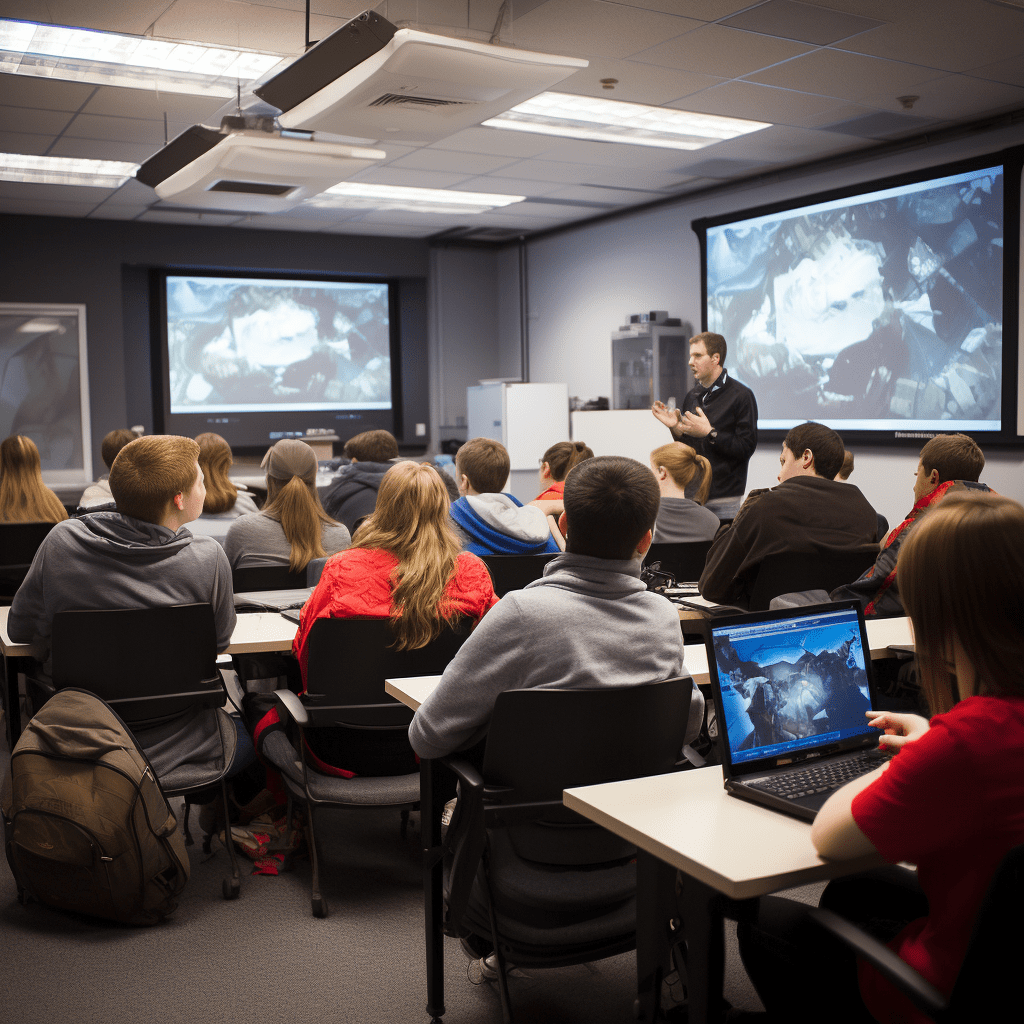Your cart is currently empty!

Introduction
Gaming education programs refer to educational initiatives that incorporate video games and gaming elements into the learning process. These programs aim to leverage the popularity and engagement of gaming to enhance students’ educational experiences. In today’s society, where technology plays a significant role in our daily lives, they have become increasingly important in preparing students for the digital age.
Benefits of Gaming Education Programs
1. Development of Critical Thinking Skills
Gaming requires players to think strategically, analyze situations, and make decisions based on limited information. This process helps develop critical thinking skills, as players must evaluate different options and anticipate potential outcomes.
2. Enhancement of Problem-Solving Abilities
Video games often present players with complex problems that require creative solutions. By engaging in gaming education programs, students can develop their problem-solving abilities by tackling challenges within the game and applying problem-solving strategies to real-life situations.
3. Improvement of Teamwork and Collaboration
Many video games encourage teamwork and collaboration, as players must work together to achieve common goals. They provide opportunities for students to collaborate with their peers, fostering teamwork, communication, and cooperation skills.
4. Promotion of Creativity and Innovation
Video games often provide players with tools and platforms to create their own content, such as levels, characters, or even entire games. By participating in gaming education programs, students can unleash their creativity, explore innovative ideas, and develop their design and programming skills.
Integration of Gaming Education Programs in Schools
To effectively integrate these into schools, various approaches can be taken:
1. Incorporation of Gaming Elements in Traditional Curriculum
Teachers can incorporate gaming elements, such as gamified quizzes or interactive simulations, into traditional subjects like math, science, or history. This approach makes learning more engaging and interactive for students.
2. Introduction of Game-Based Learning Platforms
Schools can adopt game-based learning platforms that offer educational games aligned with the curriculum. These platforms provide a structured and immersive learning experience, allowing students to acquire knowledge and skills while enjoying the gaming experience.
3. Integration of Gaming in STEM Education
Gaming can be integrated into STEM (Science, Technology, Engineering, and Mathematics) education to enhance students’ understanding and application of these subjects. For example, students can learn coding through game development or explore scientific concepts through virtual simulations.
Gaming Education Programs and Cognitive Development
1. Impact of Gaming on Memory and Attention Span
Research suggests that certain types of video games can improve memory and attention span. Games that require players to remember and recall information or focus on multiple tasks simultaneously can enhance cognitive abilities.
2. Enhancement of Decision-Making Skills through Gaming
Video games often present players with choices and consequences, requiring them to make decisions quickly and strategically. By engaging in gaming education programs, students can develop their decision-making skills and learn to weigh options and consider potential outcomes.
3. Improvement of Spatial Awareness and Hand-Eye Coordination
Many video games involve navigating virtual environments and require precise control of characters or objects. This can improve spatial awareness and hand-eye coordination, which are essential skills in various fields, including sports, arts, and technology.

Gaming Education Programs and Social Skills
1. Promotion of Communication and Social Interaction
Multiplayer games provide opportunities for students to communicate and collaborate with others, fostering social interaction and teamwork. Through gaming education programs, students can develop effective communication skills, learn to work in teams, and build relationships with their peers.
2. Fostering of Empathy and Understanding through Gaming
Some video games explore complex narratives and diverse characters, allowing players to experience different perspectives and develop empathy. Gaming education programs can leverage these storytelling elements to promote empathy, understanding, and cultural awareness among students.
3. Development of Leadership Skills in Multiplayer Games
Multiplayer games often require players to take on leadership roles and make decisions that impact the team’s success. By participating in gaming education programs, students can develop leadership skills, such as delegation, problem-solving, and conflict resolution.
Challenges and Criticisms of Gaming Education Programs
While they offer numerous benefits, they also face certain challenges and criticisms:
1. Concerns about Excessive Screen Time and Sedentary Lifestyle
Critics argue that excessive screen time associated with gaming can lead to a sedentary lifestyle and have negative health effects. It is important to strike a balance between gaming and physical activity to ensure students’ overall well-being.
2. Potential for Addiction and Negative Impact on Mental Health
Some individuals may develop addictive behaviors towards gaming, leading to negative consequences on their mental health and academic performance. Proper monitoring and guidance are necessary to prevent and address gaming addiction.
3. Lack of Standardized Assessment Methods for Gaming Education
Traditional assessment methods may not effectively measure the skills and knowledge acquired through gaming education programs. Developing standardized assessment methods that accurately evaluate the learning outcomes of gaming education is essential for its wider acceptance and implementation.
Successful Examples of Gaming Education Programs
1. Minecraft: Education Edition
This popular sandbox game has an educational version specifically designed for classroom use. It allows students to explore various subjects, collaborate on projects, and develop problem-solving and creativity skills.
2. CodeCombat
This platform combines coding education with a game-based learning approach. Students learn programming languages by solving coding challenges within a fantasy-themed game environment.
3. Gamestar Mechanic
This platform teaches game design and development to students. It provides tools
and resources for students to create their own games, fostering creativity, critical thinking, and problem-solving skills.
Future Implications of Gaming Education Programs
1. Potential for Gamification of Various Educational Fields
Gaming elements can be integrated into various educational fields beyond traditional subjects, such as language learning, financial literacy, or environmental education. Gamification can make learning more engaging and effective across different disciplines.
2. Integration of Virtual Reality and Augmented Reality in Gaming Education
Virtual reality (VR) and augmented reality (AR) technologies have the potential to revolutionize gaming education by providing immersive and interactive experiences. These technologies can enhance students’ understanding and engagement in virtual environments.
3. Expansion of Gaming Education Programs Globally
As gaming continues to gain popularity worldwide, the adoption of gaming education programs is likely to expand globally. This expansion can bridge educational gaps, provide equal opportunities for students, and promote digital literacy on a global scale.
Conclusion
Gaming education programs offer numerous benefits, including the development of critical thinking skills, enhancement of problem-solving abilities, improvement of teamwork and collaboration, and promotion of creativity and innovation. By integrating gaming into traditional curriculum, introducing game-based learning platforms, and incorporating gaming in STEM education, schools can harness the power of gaming to enhance students’ educational experiences.
While challenges and criticisms exist, successful examples of these programs, such as Minecraft: Education Edition, CodeCombat, and Gamestar Mechanic, demonstrate the potential of gaming in education. The future implications of such programs include the gamification of various educational fields, integration of virtual reality and augmented reality, and the expansion of gaming education programs globally.
It is crucial for educators, policymakers, and parents to recognize the value of them and actively explore their implementation. By embracing gaming as a tool for learning, we can prepare students for the digital age and equip them with the skills necessary for success in the 21st century.
FAQs (Frequently Asked Questions)
- Are gaming education programs suitable for all age groups?
A: They can be tailored to different age groups and educational levels. There are age-appropriate games and learning platforms available to cater to the specific needs and abilities of students. - How can gaming education programs be integrated into traditional subjects?
A: Gaming elements can be incorporated into traditional subjects by designing gamified quizzes, interactive simulations, or educational games that align with the curriculum. This integration makes learning more engaging and interactive for students. - Are gaming education programs only focused on video games?
A: While video games are a significant component of these programs, they are not the only focus. Gaming education can also include board games, card games, or other interactive activities that promote learning and skill development.






